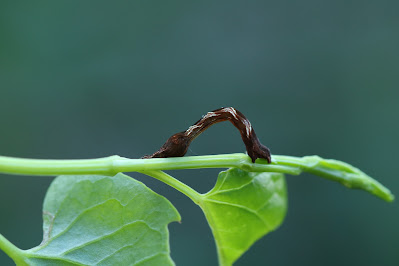Shoofly! Shoo! How many of us have said those words, or heard someone say them? They become part of our spring and summertime vocabulary as we try to keep pesky flies away from our food, drinks, and… well, US! It is a constant battle; that we are sure the flies are winning. House flies rank right up there with mosquitoes and ticks as being loathsome and unwanted. Where do they all come from and what good are they?
House flies (Musca domestica) are probably the most common fly encountered by humans. Even their genus name of domestica hints at their domesticated nature, and their association with humans, livestock and pets. In fact it has been reported that up to 90% of all flies encountered by humans will be the house fly. House flies are in the order Diptera, which means Two-Wings, and like all flies they only have one set of wings, or “two-wings.” All other winged insects have two sets of wings, or “four-wings.”
House flies are relatively small at approximately ¼ of an inch. They have gray bodies with four longitudinal stripes on their thorax (behind the head). Their bodies are covered with hair-like projections. Females are slightly larger than males. How do you tell a male from a female? Look at the eyes; the females have eyes that are wide set, whereas males will have eyes that practically meet in the middle, or touch each other.
Females are capable of laying up to 500 hundred eggs in their lifetime. These tiny white eggs will be laid on garbage or animal dung and usually hatch in less than 24 hours. It will take the maggots approximately 5 days to reach their full size, then they will drop to the ground and burrow into the soil. They will remain in this underground chamber to pupate and will emerge in a few days as fully grown adult flies. So we can easily see how we end up with so many flies…with each female producing hundreds of eggs, and those eggs going from maggot to adult in less than 1 ½ weeks, and then they are ready to mate in less than 3 days and start the cycle all over again. It has been estimated that if all the offspring of a single pair of house flies were to survive throughout one breeding season beginning in April and ending in August, they would have produced 191,010,000,000,000,000,000 progeny. Thankfully though, not all will live, many are consumed by other insects, birds, and frogs or are outwardly killed by humans. A typical adult house fly will live up to 25 days, but may live up to 2 months if suitable food can be found. They are particularly fond of sugars. According to a study conducted in Texas, breeding site suitability (in descending order), was horse manure, human excrement, cow manure, fermenting vegetable, and kitchen waste. However, another study found that structures containing swine, horse, sheep, cattle, and poultry varied in fly abundance, with swine facilities containing the most and poultry the least. Fruit and vegetable cull piles, partially incinerated garbage, and incompletely composted manure also are highly favored sites for breeding.
House flies have the potential to spread many diseases, including typhoid, cholera, dysentery, viral hepatitis, cocci, salmonella, and many other unsavory pathogens. These are spread to humans through indirect contact, meaning it is passed through their feces, vomit and from the hairs on their bodies. Think about where a fly hangs out….then he comes to join your family picnic and lands on your food. The fly will vomit, defecate or sometimes both right on Aunt Mabel’s potato salad. Then we consume Aunt Mabel’s potato salad and voila….we get sick! So the next time someone in your family yells Shoofly! Shoo! There is good reason for it……these little beasties should be kept away from food meant for human consumption. The transmission of diseases is more prevalent in areas where hygiene is poor. Washing and cooking raw vegetables controls the spread of these pathogens. When outside, keep food covered to deny the fly access. Remember, that fly has been crawling around on garbage and manure, then landing on your food….!
Controlling flies is a difficult endeavor that involves removing animal waste, garbage and other materials they find suitable for mating and laying eggs. Killing the adults will help, but remember one fly can produce 500 eggs, so if you do not remove the areas where eggs are laid, an infestation will occur. This is especially true near livestock farms.
When being asked where do they all come from, and what good are they; I point out their prolific lifestyle and their ability to produce numerous offspring. I try to find something good in all manner of creatures, including flies. They are instrumental in breaking down waste which aids in adding nutrients back in the soil. They are also a food source to numerous other creatures. So not all is bad where house flies are concerned, but it is still best to keep them at a distance.







